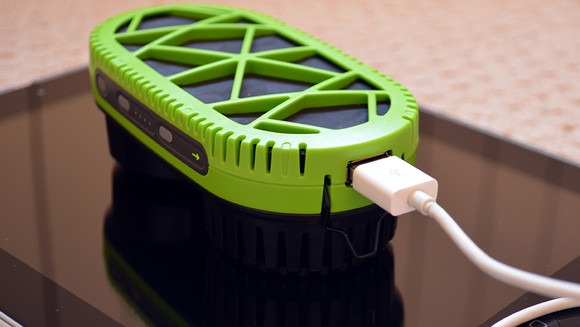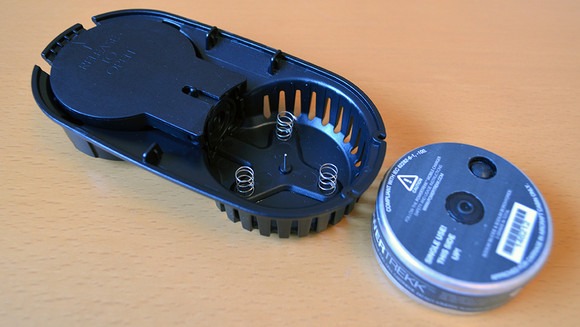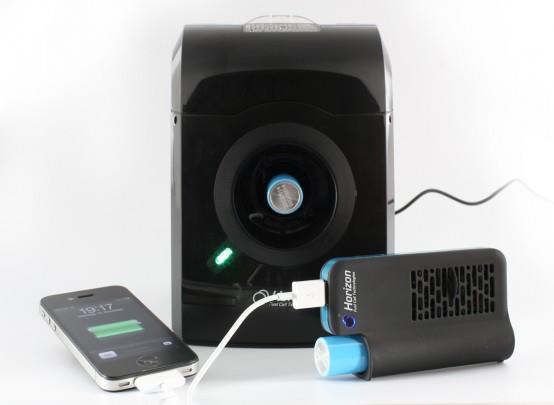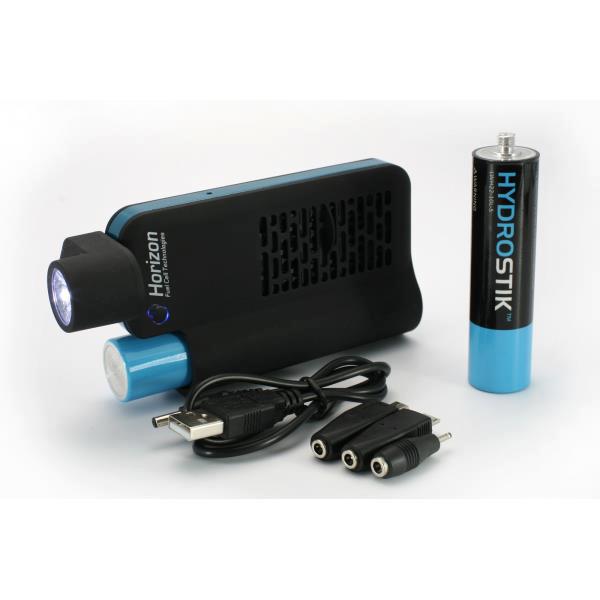As many of you might already be aware, some exciting developments have been unfolding in the portable fuel cell market in recent months. Unfortunately, the excitement at the moment seems to be geared more-toward the potential for the technology itself, rather than the strange array of available consumer products which currently employ it. But hey, that’s typical for anything in the beta-phase, and generally the first sign of something groundbreaking, right? We can only hope!
Pocket-Sized Fuel Cells
A few months ago, I was camping in Massachusetts and I got to check-out the myFC PowerTrekk—a rugged-looking little charging specimen capable of outputting enough juice to reliably and consistently power USB handheld devices in off-the-grid scenarios. The PowerTrekk is one of several portable fuel cell models currently available which is capable of generating power through the separation of hydrogen from water. It does this by reacting regular water with sodium silicide, which produces sodium silicate (aq) and of course, hydrogen, which the device uses as its fuel source. This exciting and mildly exothermic reaction is certainly a safer way to separate hydrogen from water compared to most other methods, and because of that, the PowerTrekk is a reasonably safe product to carry around with you, as it does not store the hydrogen gas like some other competing models do. Of course, the bad part about the PowerTrekk is that it does not store hydrogen like some other competing models do, which somewhat compromises its handiness. It does, however, contain a lithium-ion battery which can store a substantial charge so that your efforts are not in vein if you are kicked-out of your campsite while amidst a reaction at your picnic table laboratory.

The internal battery might be the saving grace of the PowerTrekk, as nothing is more infuriating to a gadget freak than being inconvenienced by the various variables that often limit the effectiveness of their latest investment—in this case, the act of physically catalyzing the reactants in this thing. You can also charge the battery via USB and omit the fuel cell altogether, if you are in-a-pinch and just need some reliable juice. The fuel cell itself is capable of generating a 5.6 watt-hour output, which when subsidized with the internal Li-ion, is more than capable of revitalizing your typical smartphone which requires about 2.5W at a minimum, or 5.0 at the quickest-charge-rate, high-speed max.

One of the neater models competing with the PowerTrekk is the MINIPAK, made by Horizon Fuel Cell Technologies. I haven’t had a chance to use one of these yet, and from the small handful of likes that it has on facebook, I am not sure that many people have other than the employees who made it. Nevertheless, the MINIPAK has some awesome benefits—numero uno being that you can buy the HYDROFILL Hydrogen Cartridge Refueling System to refill the HYDROSTICK hydrogen cartridge used in your MINIPAK (included with purchase). That is a huge advantage over the PowerTrekk, which requires purchasing PowerTrekk Pucks that cost about $4 each (sans shipping) and only last about two full runs in the device—so basically $2 per-go. Naturally, the HYDROFILL system is an added cost to the MINIPAK…$298 bucks, to be exact…but it’s pretty darn sweet! It’s like generating your own oxygen at home to go diving (or breathing) with. The MINIPAK is $120, which is on-average about $100 cheaper than the PowerTrekk (so you are saving money there), and it comes with a FREE LED flashlight adapter, which changes everything! The PowerTrekk runs about $220 +/-, depending upon where you buy it from. If you live close to an REI, then you can grab one for $200 and save yourself on the painful €25 shipping (about $34)—unless you happen to have a mailing address somewhere in Europe, as shipping is free to the EU (grumble).



To sum-it-up, I think that the industrial design of the PowerTrekk is pretty sweet—it’s a little arts-and-craftsy for my modernist taste-preference, but I dig the mix of smooth edges and geometric accents. I gather that it is probably reasonably well-designed in terms of its impact resistance and load-distribution under drop scenarios, but crush might be a different story (I didn’t get to barrage the one that I tested, unfortunately). The idea of the pucks annoys me to the extent that I would never buy a PowerTrekk—I would rather pool my money with my camping buddies and go all-in for the HYDROFILL system if I was serious about grabbing a portable fuel cell this year.
Most importantly, there is certainly something to be said for generating your own fuel—I can’t tell you how many different models of camp stoves I have seen go in-and-out of fashion in the past decade and how many proprietary fuel canisters are no longer being manufactured for older models. Hopefully, myFC will be kinder to their customers than some of the other portable fuel mongerers in the increasingly-affluent outdoors industry. With that, I’m sticking to my beloved SOLIO Rocsta until there is a bit more proof-in-the-pudding for the portable fuel cell market.
(myFC PowerTrekk images via TechRadar)
(MINIPAK, HYDROSTICK, and HYDROFILL images via Horizon Fuel Cell Technologies)





